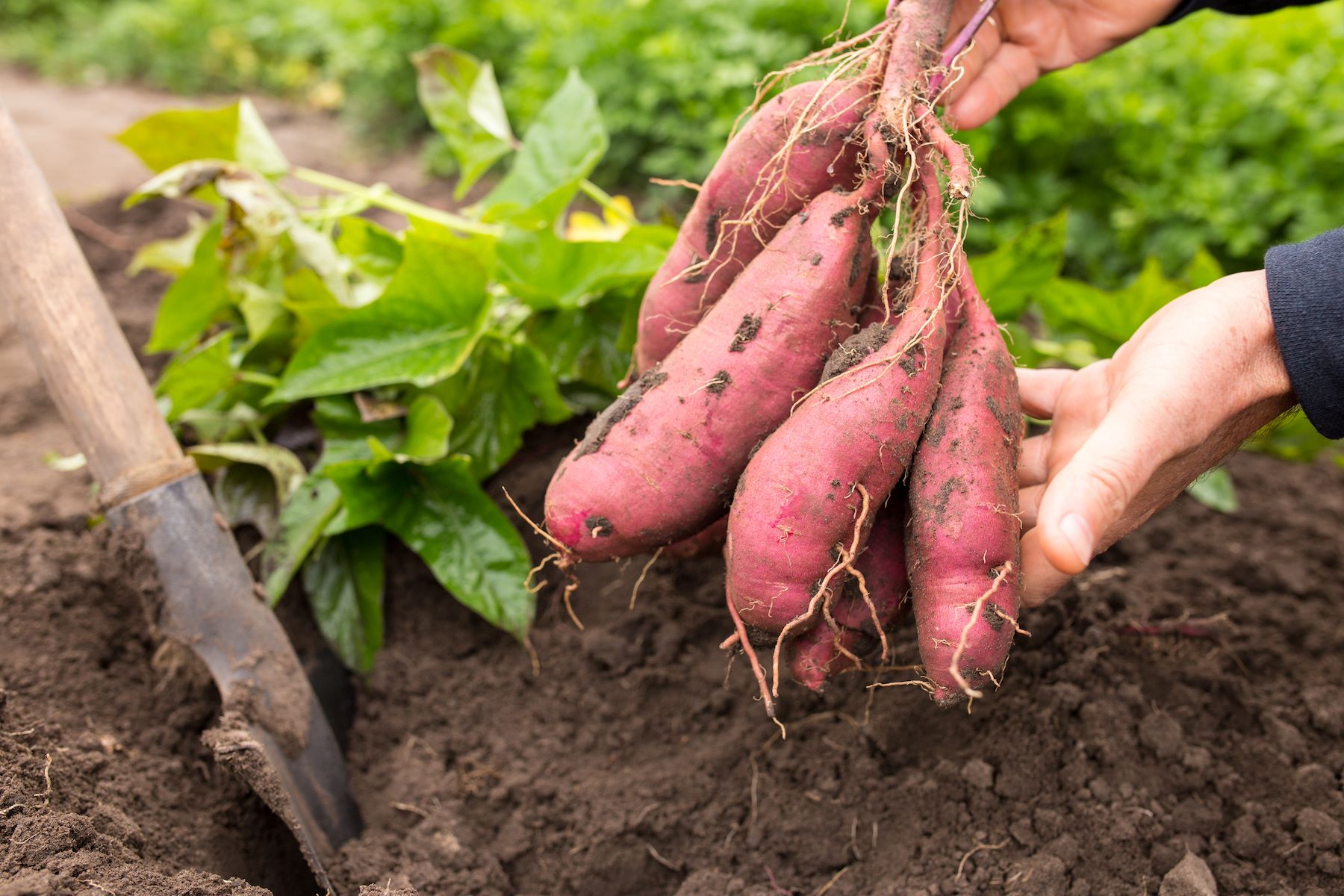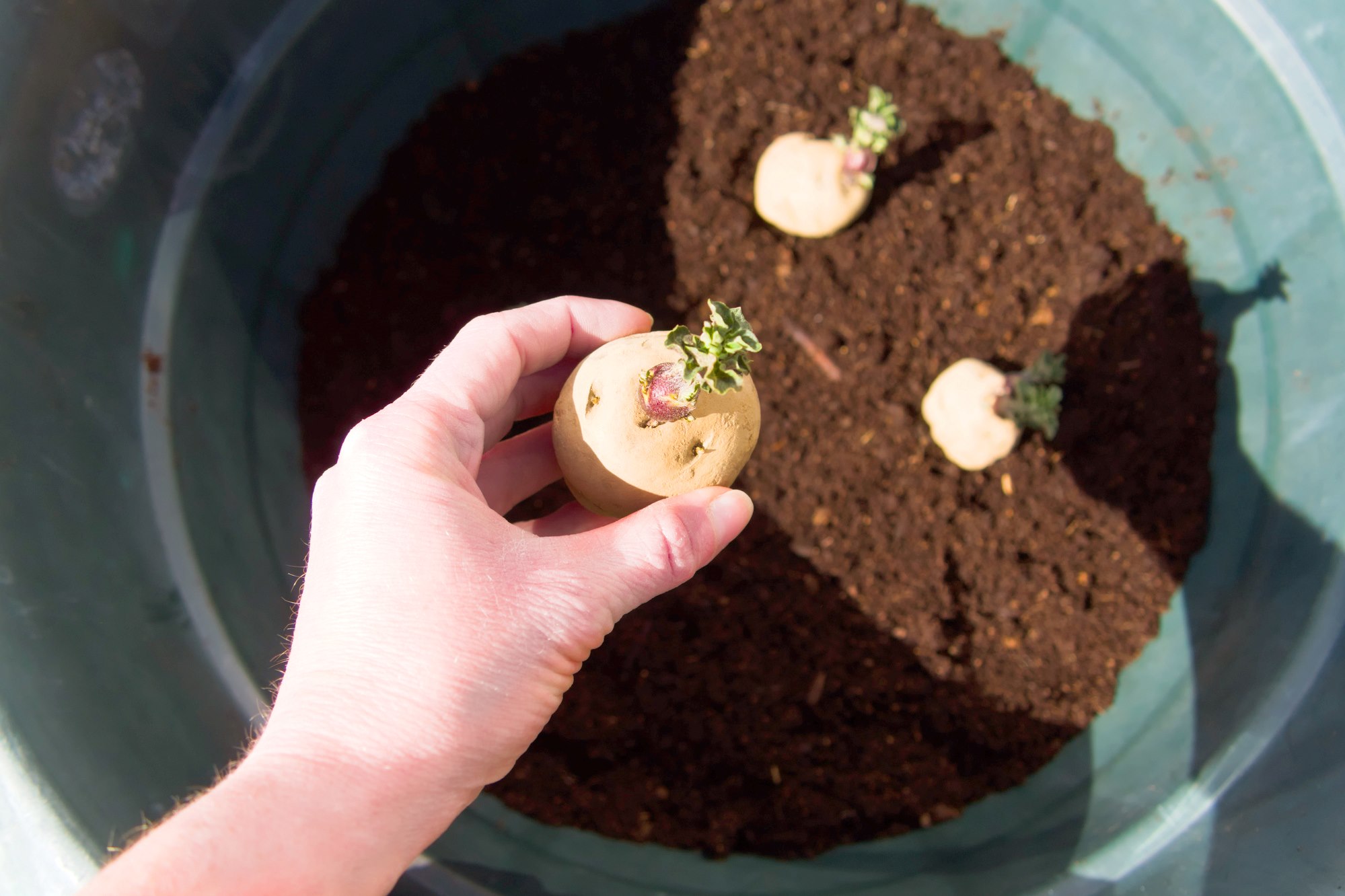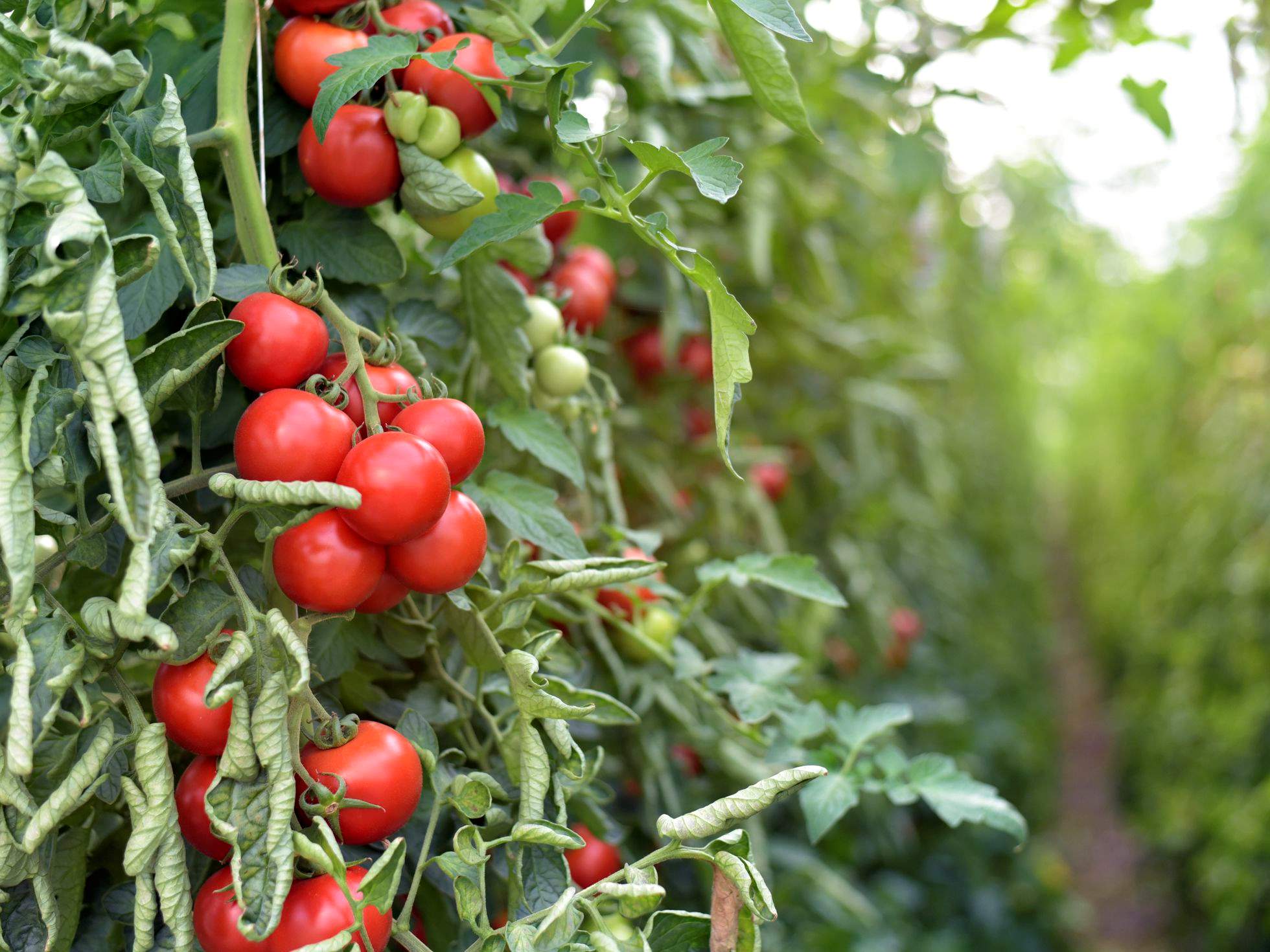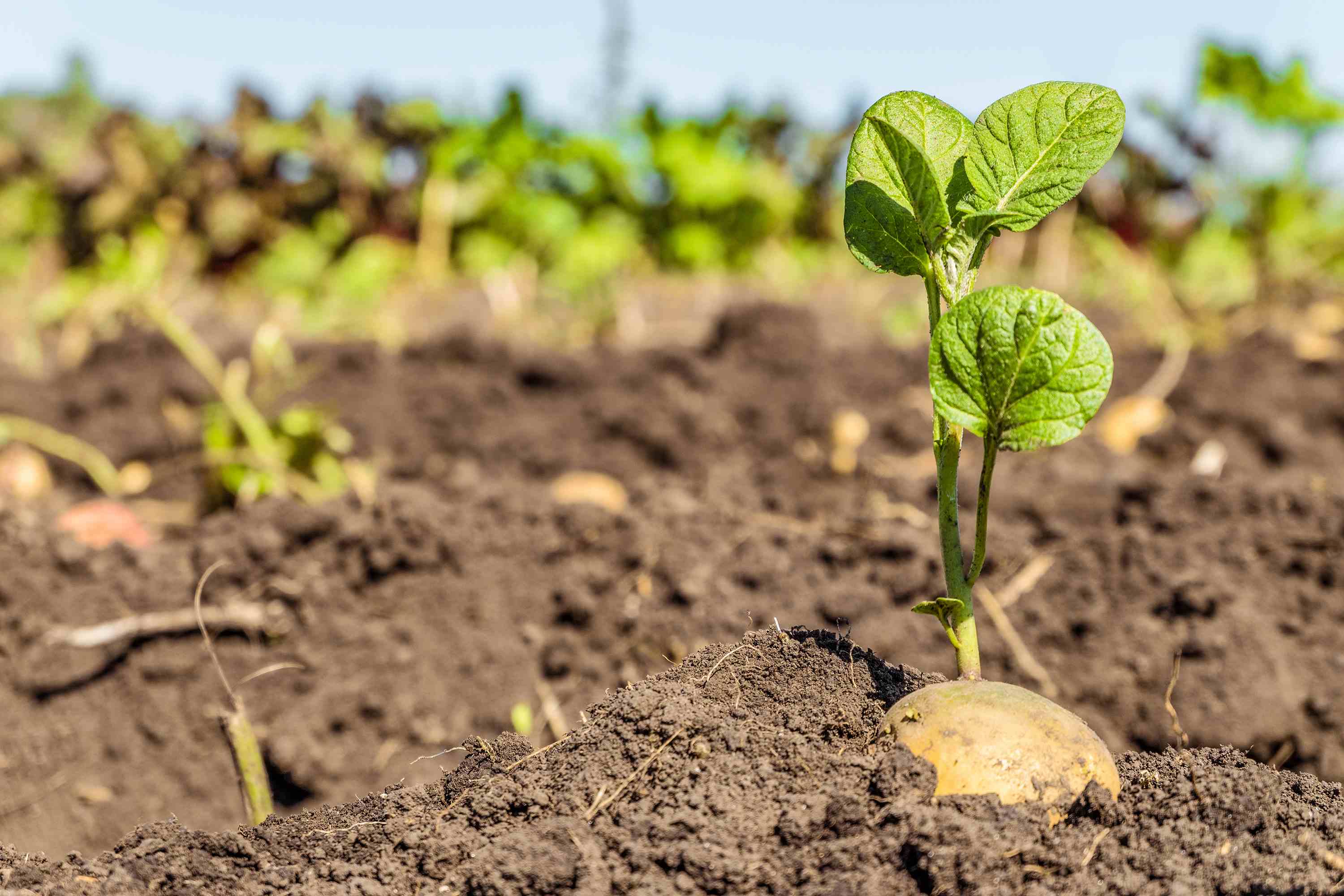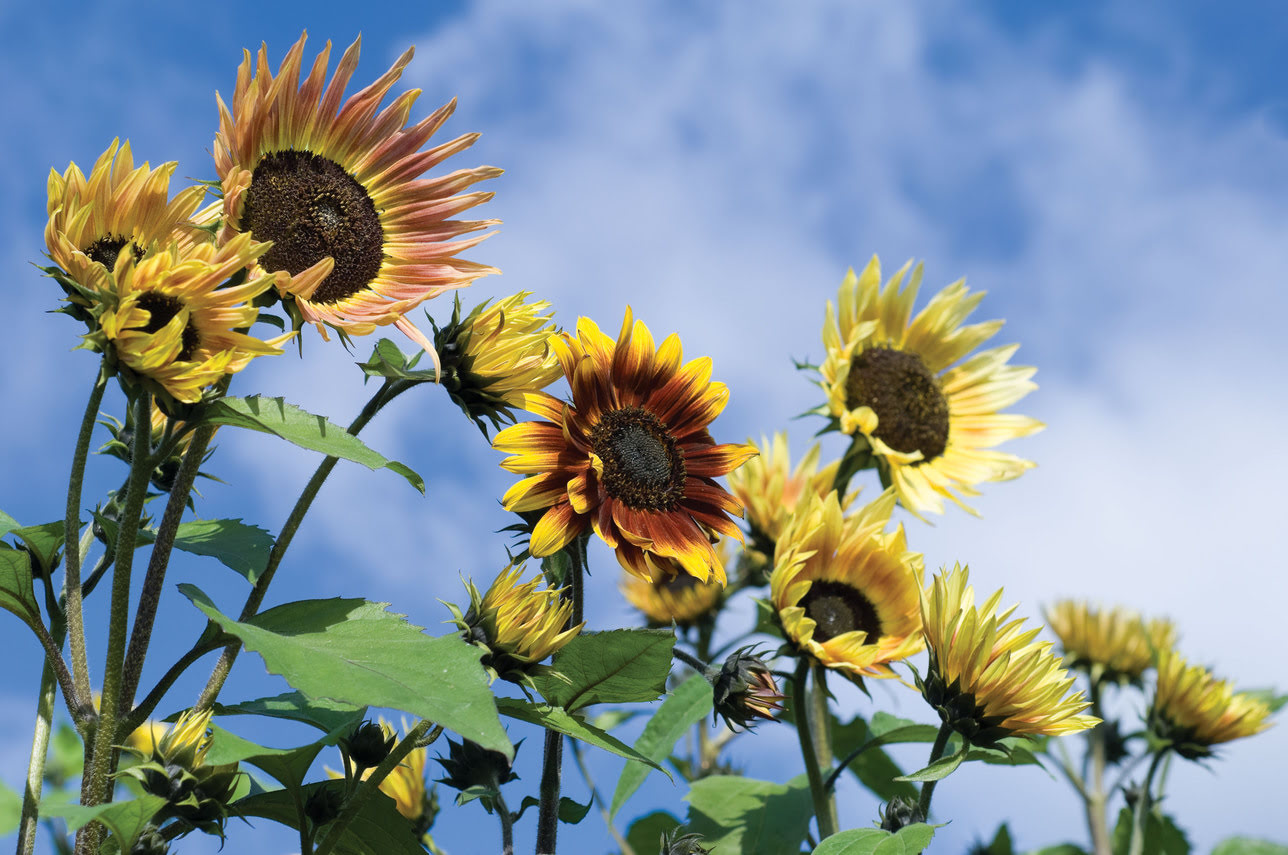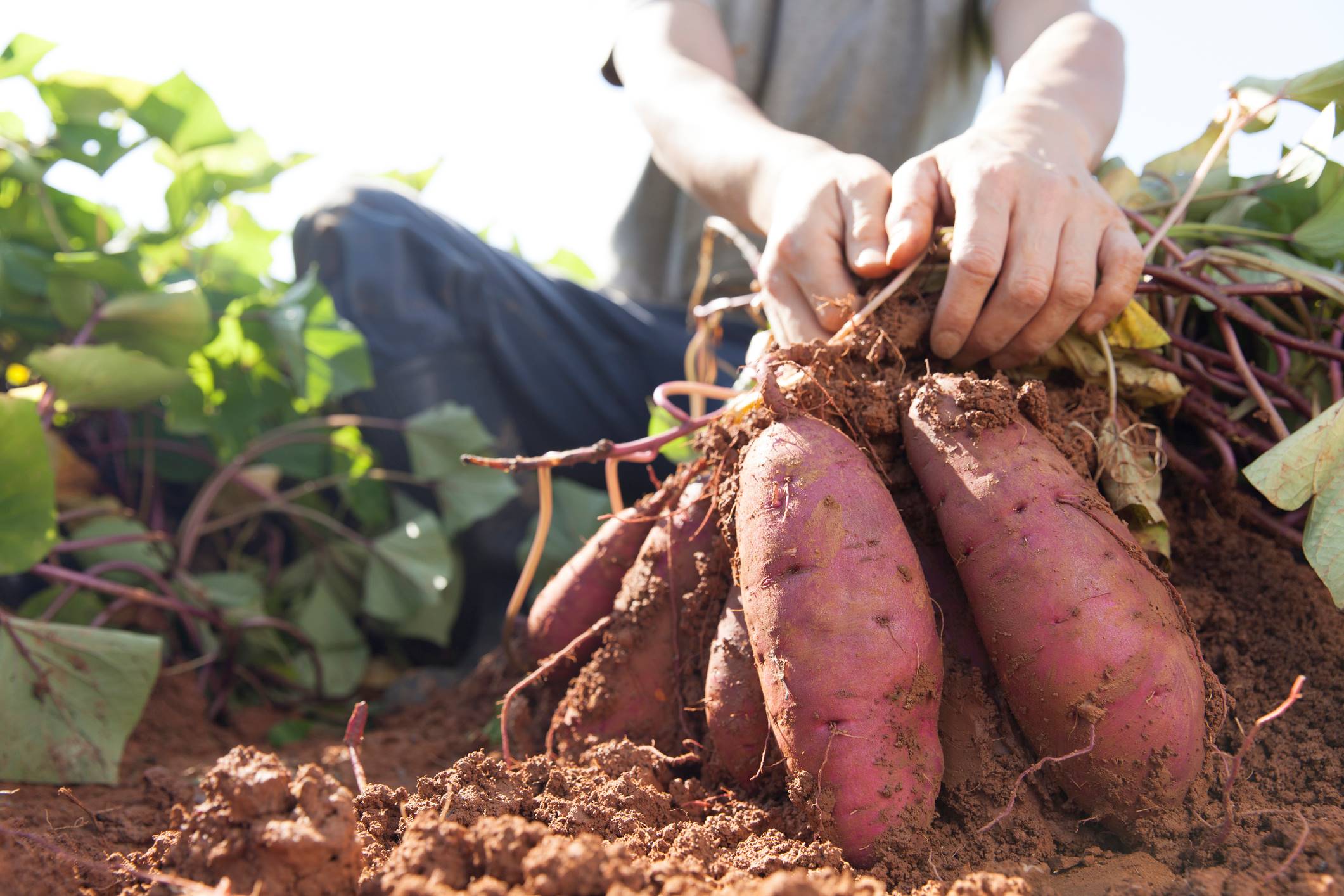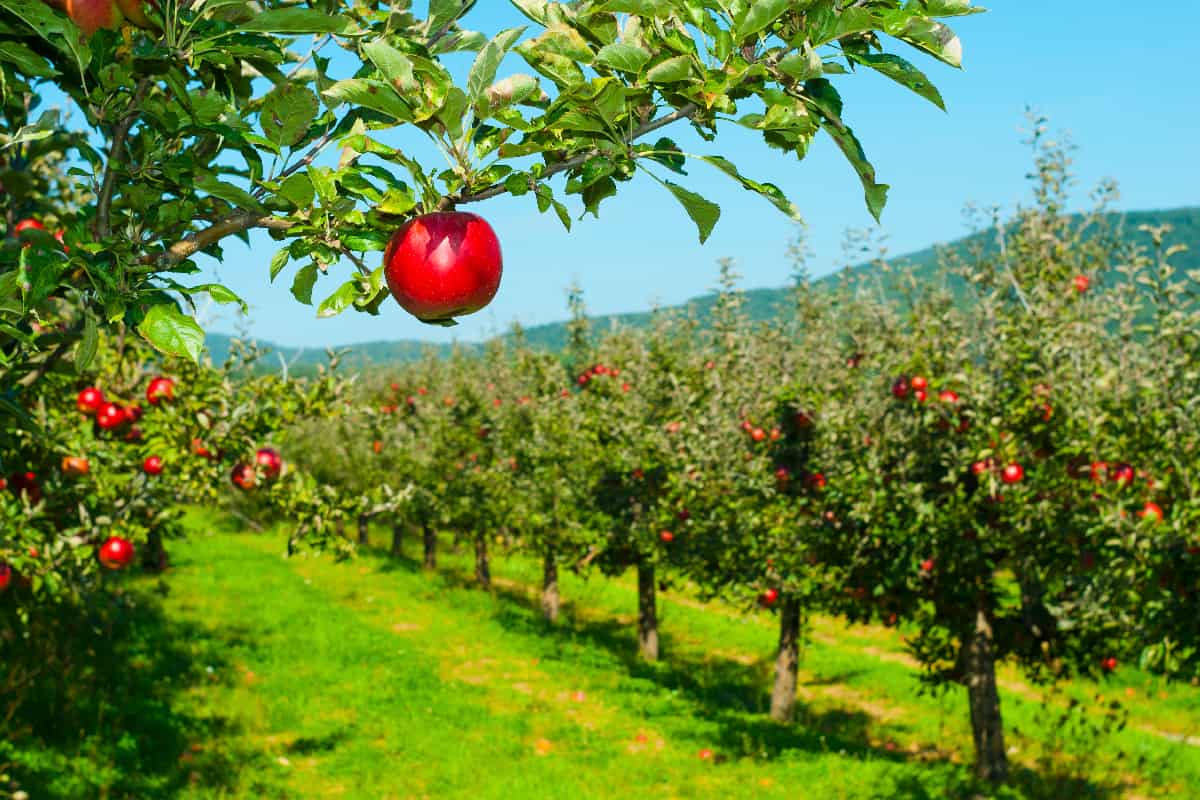Home>Types of Gardening>Edible Gardening>How Far To Space Potatoes When Planting
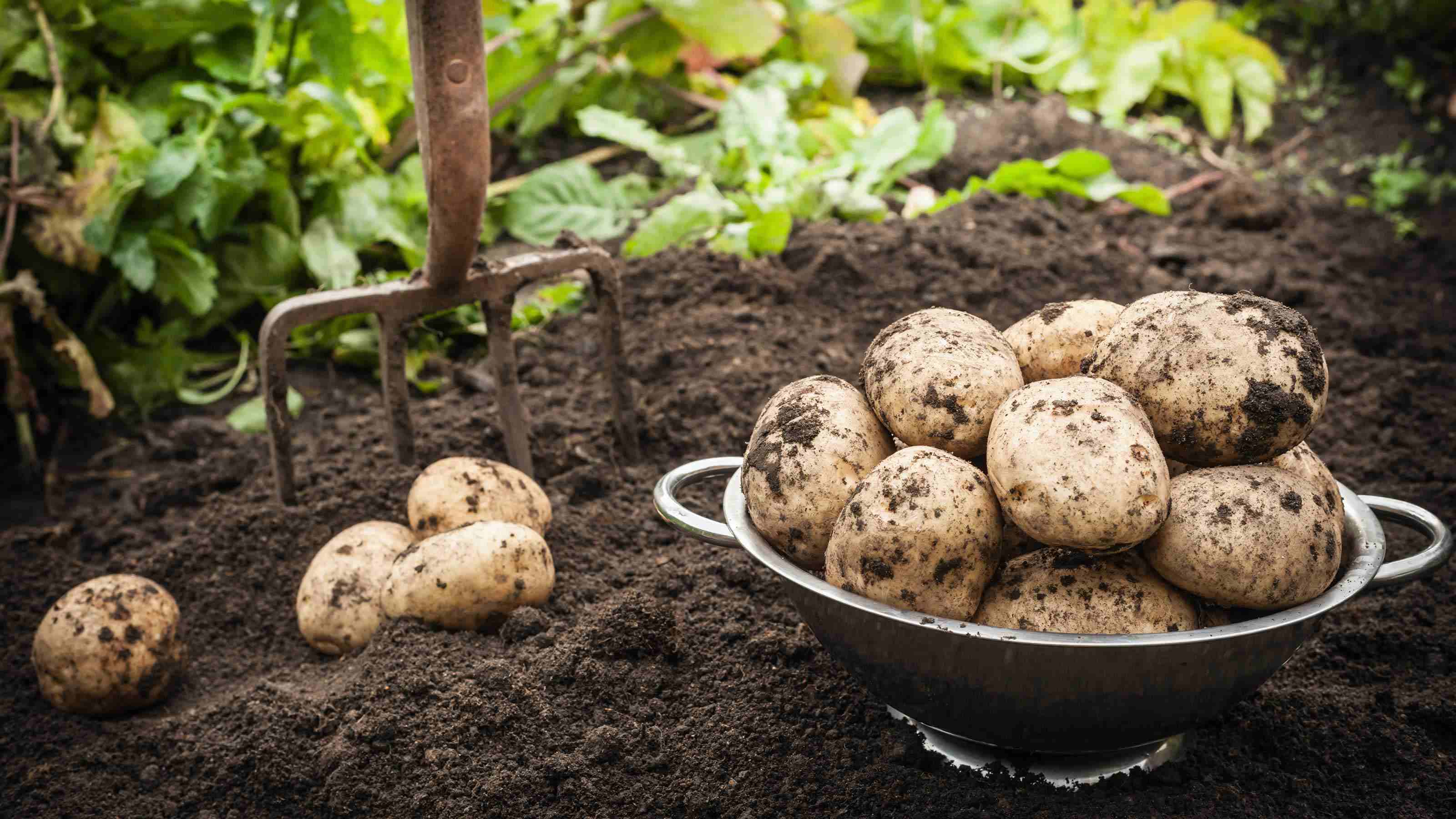

Edible Gardening
How Far To Space Potatoes When Planting
Published: September 6, 2023
Learn the ideal spacing for planting potatoes in your edible gardening adventure. Find out how far apart to space your potato plants for optimal growth and yield.
(Many of the links in this article redirect to a specific reviewed product. Your purchase of these products through affiliate links helps to generate commission for Chicagolandgardening.com, at no extra cost. Learn more)
Table of Contents
Introduction
Welcome to the world of edible gardening, where the joy of growing your own food is just a few soil-filled pots away. One of the most popular and versatile crops to grow at home is potatoes. Whether you have a spacious backyard or a small balcony, potatoes can thrive in containers, raised beds, or traditional garden plots. However, to ensure a successful harvest, it is crucial to understand the importance of properly spacing your potato plants.
Spacing is an essential factor in edible gardening as it directly affects the growth, health, and productivity of your crops. When it comes to potatoes, inadequate spacing can lead to overcrowding, competition for nutrients, increased susceptibility to pests and diseases, and smaller yields. On the other hand, providing ample space for each potato plant allows for optimal root development, adequate airflow, and efficient nutrient absorption.
In this article, we will dive into the factors to consider when spacing potatoes, the recommended spacing guidelines, and the techniques to achieve optimal spacing. We will also explore the potential issues that arise when potatoes are improperly spaced. By the end, you’ll have all the knowledge you need to confidently plan and space your potato plants for a bountiful harvest.
Factors to Consider When Spacing Potatoes
Spacing your potato plants involves more than just randomly placing them in the ground. There are several important factors to consider to ensure the health and productivity of your potato crop:
- Variety: Different potato varieties have varying growth habits and sizes. Some varieties are more compact, while others can sprawl and spread. Understanding the growth characteristics of the specific potato variety you are planting will help determine the spacing requirements.
- Soil Fertility: Potatoes thrive in well-drained, nutrient-rich soil. Adequate spacing allows each plant to access the necessary nutrients and water without competition from neighboring plants. If the soil is lacking in fertility, spacing becomes even more crucial to prevent nutrient deficiency and stunted growth.
- Air Circulation: Good airflow around the potato plants is essential to prevent the buildup of moisture and reduce the risk of fungal diseases, such as blight. Proper spacing allows for adequate air circulation, keeping the plants dry and healthy.
- Sunlight: Potatoes require full sun for optimal growth and tuber development. When spacing your potato plants, make sure they are positioned in a way that allows each plant to receive adequate sunlight throughout the day. This will promote photosynthesis and maximize yields.
- Tuber Size: The ultimate goal of growing potatoes is to harvest large, healthy tubers. Adequate spacing ensures that each potato plant has enough room to produce robust tubers. Crowded plants can result in smaller tuber size and reduced overall yield.
- Gardening Space: The available gardening space you have will influence the spacing of your potato plants. Whether you are gardening in containers, raised beds, or traditional garden plots, it is essential to adapt the spacing based on the space limitations.
Considering these factors will help you make informed decisions when determining the optimal spacing for your potato plants. By providing the right amount of space, nutrients, sunlight, and airflow, your potato plants will thrive and reward you with a delicious and abundant harvest.
Recommended Spacing for Potatoes
To ensure the healthy growth and maximum yield of your potato plants, it is important to follow recommended spacing guidelines. While the exact spacing may vary depending on factors such as variety, soil fertility, and available space, here are some general recommendations:
Rows:
- Plant potatoes in rows, with sufficient space between each row to allow for easy access and maintenance.
- Leave approximately 2 to 3 feet (60 to 90 cm) between each row to provide ample room for soil cultivation, watering, and plant care.
Within Rows:
- Space the potato plants within each row approximately 8 to 12 inches (20 to 30 cm) apart.
- For larger varieties or if you want to allow for more robust growth, increase the spacing to 12 to 15 inches (30 to 38 cm).
- Smaller, compact varieties can be spaced closer together, around 6 to 8 inches (15 to 20 cm) apart.
It is important to note that these are general guidelines, and you should adjust the spacing based on the specific requirements of your potato variety and the available space. Plants that are too crowded will compete for resources and may result in smaller tubers, while spacing that is too generous may lead to wasted space and decreased overall yield.
If you are planting in containers or raised beds, adjust the spacing accordingly. Allow for sufficient space between each container or bed to ensure proper airflow and access for maintenance.
Remember, the ultimate goal is to achieve a balance between optimizing yield and utilizing available space effectively. By following these recommended spacing guidelines, you will give your potato plants the best chance to thrive and produce a bountiful harvest.
Spacing Guidelines for Different Potato Varieties
When it comes to spacing potato plants, it’s important to consider the specific characteristics and growth habits of the variety you’re planting. Here are some spacing guidelines for different potato varieties:
Compact Varieties:
- Compact varieties, such as Yukon Gold or Red Pontiac, generally require less space due to their smaller size.
- Plant these varieties approximately 6 to 8 inches (15 to 20 cm) apart within each row.
- Leave about 2 to 3 feet (60 to 90 cm) between rows to allow for easy access and maintenance.
Mid-Sized Varieties:
- Varieties like Kennebec or Norland fall into the mid-sized category and may require a bit more space to accommodate their growth.
- Space these varieties around 8 to 12 inches (20 to 30 cm) apart within each row.
- Maintain a distance of approximately 2 to 3 feet (60 to 90 cm) between rows.
Larger Varieties:
- Larger potato varieties, such as Russets or Desiree, tend to produce bigger plants and may need more room to spread.
- Give these larger varieties a spacing of 12 to 15 inches (30 to 38 cm) within each row.
- Leave about 2 to 3 feet (60 to 90 cm) between rows to ensure adequate airflow and easy access for maintenance.
It’s essential to research the specific variety you’re planting to get accurate spacing guidelines. The seed packet or plant label should provide valuable information about the variety’s growth habit and recommended spacing.
Keep in mind that these guidelines are approximate. Factors such as soil fertility, climate, and available space can influence spacing requirements. If you’re uncertain, it’s better to err on the side of caution and provide a little more space to avoid overcrowding.
By following these spacing guidelines specific to different potato varieties, you’ll promote optimum growth and yield, ensuring that each plant has enough space to develop healthy tubers.
Planting Techniques for Optimal Potato Spacing
Proper planting techniques play a vital role in achieving optimal spacing for your potato plants. Here are some techniques to consider:
Preparation:
- Prepare the soil by removing any weeds or rocks that could hinder the growth of your potato plants.
- Loosen the soil to a depth of at least 8 to 10 inches (20 to 25 cm) to promote healthy root development.
- Consider adding organic matter, such as compost or well-rotted manure, to improve soil fertility and drainage.
Depth and Planting:
- Plant potato tubers approximately 4 to 6 inches (10 to 15 cm) deep in the soil.
- Space the tubers according to the recommended guidelines, allowing for proper spacing between each plant.
- Place the tubers with the “eyes” facing upward to promote sprouting and growth.
Hilling:
- Hilling is a technique where soil is gradually added to the base of the plants as they grow.
- Start hilling when the potato plants reach a height of about 6 to 8 inches (15 to 20 cm).
- Add soil around the base of the plants, covering the lower stems and leaving the top few leaves above the soil.
- Hilling helps to promote tuber formation and prevents the green tubers from being exposed to direct sunlight, which can cause them to turn green and become toxic.
Planting techniques like hilling are especially beneficial when it comes to optimizing spacing for potatoes. It allows the plants to have more room for root development, encourages tuber growth, and helps in preventing overcrowding.
Remember to water your potato plants consistently to keep the soil moist but not waterlogged. Adequate watering promotes healthy growth and helps the plants establish their root systems.
By implementing these planting techniques, you’ll promote optimal spacing for your potato plants, providing them with the space they need to thrive and produce a successful harvest.
Potential Issues with Improper Potato Spacing
Improper spacing of potato plants can lead to various issues that can negatively impact the health and productivity of your crop. Here are some potential problems that can arise:
Competition for Resources:
When potato plants are crowded together, they compete for essential resources such as nutrients, water, and sunlight. This competition can result in stunted growth, reduced tuber development, and overall lower yields. Adequate spacing allows each plant to access the necessary resources without hindrance.
Poor Air Circulation:
Tightly packed potato plants restrict airflow, creating a humid environment that promotes the development of fungal diseases such as blight. Proper spacing ensures adequate air circulation, preventing the buildup of moisture, and reducing the risk of diseases. Good airflow also helps to keep the potato foliage dry, further preventing disease spread.
Increased Pest and Disease Susceptibility:
Crowded potato plants provide a favorable environment for pests and diseases. The lack of airflow and increased humidity can attract pests like aphids and increase the risk of fungal infestations. Spacing the plants properly minimizes the chance of these issues, making it easier to manage pests and diseases effectively.
Small Tuber Size:
Insufficient spacing limits the ability of the potato plants to grow and develop large tubers. When plants are crowded, the tubers have limited space to expand, resulting in smaller sizes. Providing adequate spacing allows each plant to reach its full potential, producing larger and more plentiful tubers.
Difficulty in Maintenance:
Improper spacing can make it challenging to access and maintain the potato plants. It may hinder tasks such as weeding, fertilizing, and harvesting, leading to a less efficient gardening experience. Ample spacing allows for easy access to each plant, facilitating maintenance tasks and ensuring their proper care.
By understanding the potential issues associated with improper potato spacing, you can make informed decisions and implement appropriate spacing techniques. Remember, proper spacing is key to promoting healthy growth, preventing disease, and maximizing the yield of your potato crop.
Conclusion
Proper spacing is crucial for the success of your potato crop in edible gardening. By considering factors such as variety, soil fertility, air circulation, sunlight, tuber size, and available gardening space, you can determine the optimal spacing for your potato plants.
Following recommended spacing guidelines, such as leaving adequate space between rows and within each row, ensures that your potato plants have enough room to grow, access nutrients, and receive sufficient sunlight. This promotes healthy root development, encourages robust tuber formation, and maximizes your overall yield.
Implementing planting techniques such as proper soil preparation, correct depth, and hilling helps optimize spacing and provides the necessary conditions for your potato plants to thrive. Additionally, it is essential to be aware of the potential issues that can arise from improper spacing, including resource competition, poor air circulation, increased pest and disease susceptibility, small tuber size, and difficulties in maintenance.
By understanding the importance of proper potato spacing and incorporating the recommended guidelines and techniques, you can create an environment conducive to the healthy growth and productivity of your potato plants. The reward will be a bountiful harvest of delicious homegrown potatoes that you can proudly enjoy with your family and friends.
